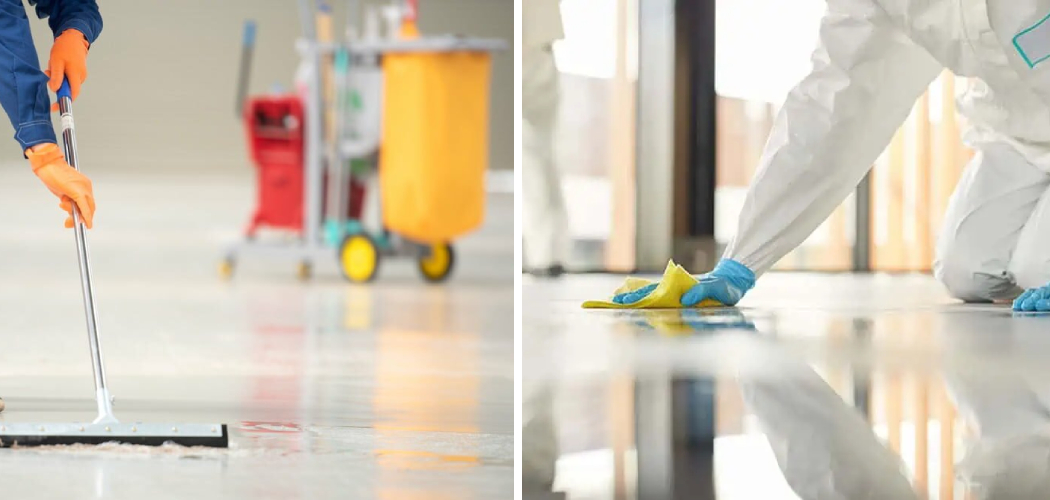Epoxy floors provide a durable, attractive surface for many different types of home and business applications. One of the key benefits of epoxy flooring is its ability to resist scratches and scuffs while looking great for years with minimal maintenance. However, even though it is tough, it’s still susceptible to dirt and grime buildup. This means that it’s important to know to wash epoxy floors so that you can keep them looking their best.
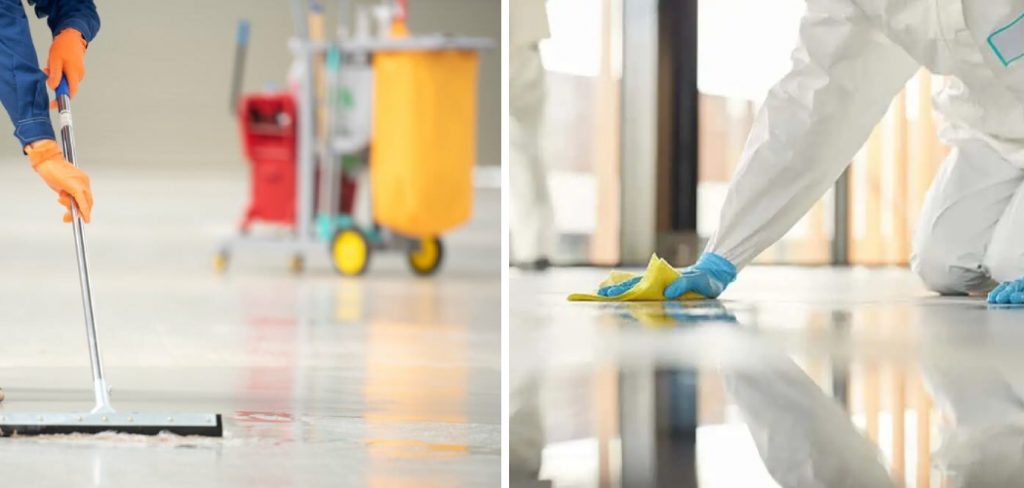
One of the major advantages of washing epoxy floors is that they are highly resistant to wear and tear, scratch damage, and staining. This makes them ideal for warehouses, garages, industrial spaces, and other high-traffic areas where dirt and grime can quickly accumulate. In this blog post, You will learn how to wash epoxy floors.
Step-by-Step Processes for How to Wash Epoxy Floors
Step 1: Inspect the Floor
Before washing the epoxy floor, it is important to quickly inspect the area and check for any cracks, chips, or raised areas that could be damaged by moisture. If you notice these issues, it is best to repair them before starting the cleaning process.
Step 2: Sweep the Floor
The next step in washing an epoxy floor is thoroughly sweeping the area to remove any dirt, dust, and gravel that may be present on the surface. This will help make sure that all debris is removed from the floor before beginning the actual cleaning process.
A high-powered vacuum cleaner can help pick up any remaining dust or particles missed while sweeping. Make sure to detach any attachments and run the vacuum in a grid pattern to remove all dirt from the floor.
Step 3: Mop the Floor
After vacuuming, it is time to mop the epoxy floor with a damp microfiber or soft cloth mop. Use a small amount of warm water mixed with a mild detergent or cleaning solution specifically designed for epoxy floors. Once you have finished mopping, it is time to rinse off the cleaning solution with a second pass of warm water. Use your mop or a wet-dry vacuum cleaner to suck up the excess water and remove any remaining dirt or debris.
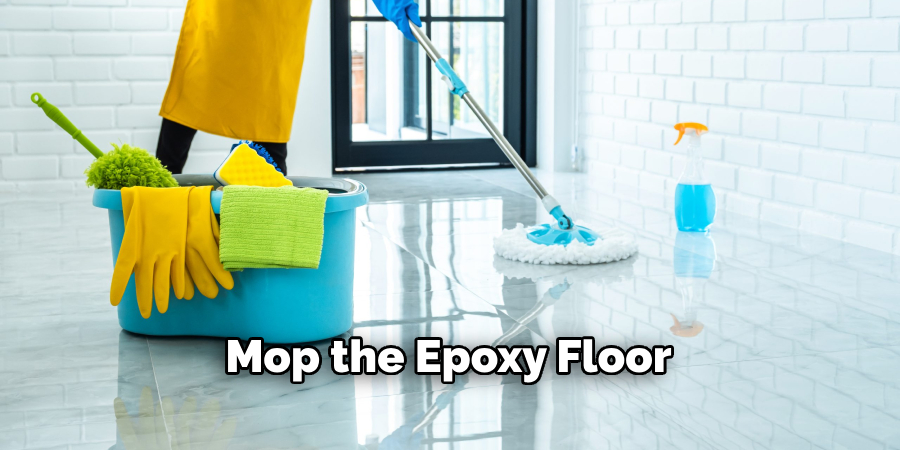
Step 4: Dry the Floor
After rinsing, allow the floor to dry completely before moving on to the next step. You can speed up this process by using fans or dehumidifiers if needed. Once your epoxy floor is dry, you can begin polishing it with a high-speed polisher or buffer. This will help maintain the floor’s sheen and shine, while also locking in the protective layer of wax.
Step 5: Wax the Floor
After polishing, it is time to apply a coat of wax or sealant to your epoxy floor. This will provide an extra layer of protection against staining and wear and tear from everyday use. Once you have finished waxing the floor, cleaning up and disposing of any leftover wax residue or materials is important. Make sure to vacuum away any dust from the polishing process as well.
Step 6: Inspect the Floor Again
After following all of these steps, it is important to walk around the area one last time and do a quick inspection to make sure that the epoxy floor is clean and free of any remaining dirt or debris.
Following these steps will help you maintain beautiful, long-lasting results when it comes to washing your epoxy floors.
Safety Tips for How to Wash Epoxy Floors
- When cleaning epoxy floors, wear appropriate safety gear such as gloves, goggles, and a mask. This will protect you from any hazardous chemicals that may come into contact with your skin.
- Ensure the area has adequate ventilation if working with harsh or toxic chemicals to avoid irritation or respiratory problems.
- Ensure your floor is dry before attempting to clean it, as any water will cause the epoxy to break down.
- Use a soft, bristled broom or mop to sweep away dirt and debris from the floor’s surface.
- Vacuum or use a damp cloth to remove embedded grime and dust from crevices between tiles or flooring cracks.
- Consider using a natural cleaner such as baking soda or vinegar to remove stubborn spots or stains.
- Rinse the floor with clean water and dry thoroughly after cleaning to ensure that all chemical residues have been removed. This will also protect your epoxy from damage due to prolonged exposure to moisture.
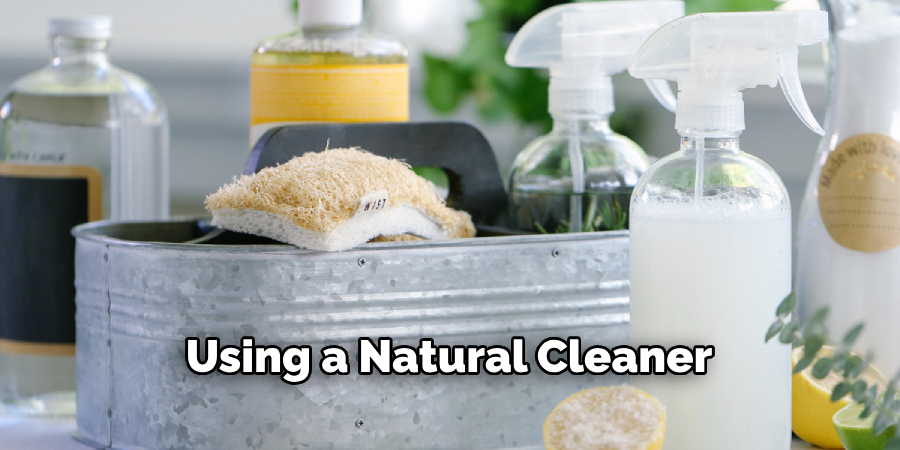
By following these safety tips while cleaning your epoxy floors, you can keep them looking like new for years to come.
How Often Should You Clean Your Epoxy Floor?
Epoxy floors should be cleaned regularly to maintain their appearance and durability. For general maintenance, epoxy floors can be cleaned daily with an all-purpose cleaner or disinfectant. For more thorough cleaning, a deeper scrubbing might be necessary every few months, depending on how much traffic the floor receives and how often it is exposed to dirt, grease, and other contaminants.
When cleaning your epoxy floor, it is important to use a soft-bristled brush or an untreated mop and avoid using any abrasive materials as these can damage the surface.
Always test any cleaning product on a small area first to ensure it won’t cause discoloration or damage. Once you have tested the product, apply it to your epoxy floor using a cloth or mop. After allowing it to sit for a few minutes, use a damp mop to rinse off any residue and then dry it with a clean towel.
What is the Best Way to Remove Dirt and Debris From an Epoxy Floor?
The best way to remove dirt and debris from an epoxy floor is by using a broom or vacuum to remove any loose material. Once the dust and debris are out of the way, a damp mop can be used for more thorough cleaning. It’s important to use the right cleaning solution, though; plain water won’t do much good when it comes to removing tough dirt and grime.
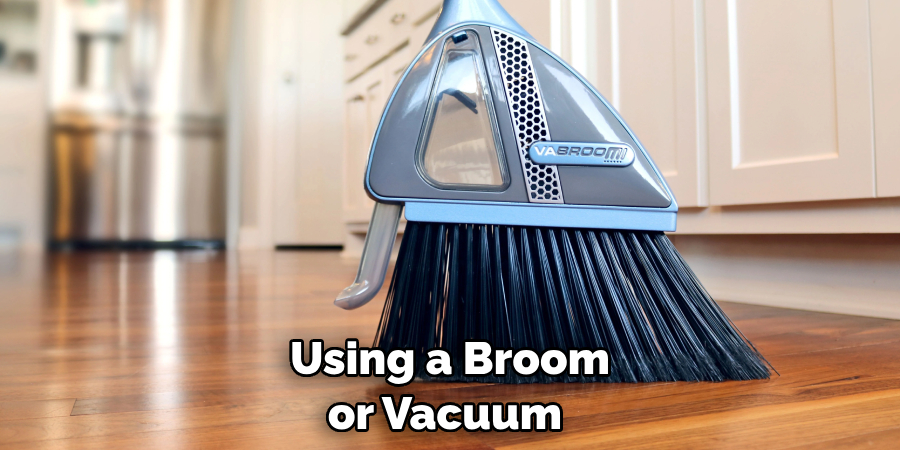
A mild all-purpose cleaner or dish soap is the best choice for an epoxy floor for daily cleaning. These cleaners are gentle enough not to cause damage to the surface while still being powerful enough to break down any dirt and debris that may be present.
When using an all-purpose cleaner, it’s important to rinse the floor well afterward, as residue from the cleaner can cause a dull film on the surface. A stronger solution may be necessary when dealing with more stubborn stains or dirt that won’t come off with regular cleaning. A diluted mixture of vinegar and water can help break down tougher grime and make the floor look like new again.
Are There Any Dangers to Consider When Washing an Epoxy Floor?
When it comes to cleaning and maintaining an epoxy floor, some safety considerations should be taken into account. Since many of the products used for washing a floor contain chemicals, it is important to take the necessary steps to ensure that these chemicals do not come in contact with the skin or eyes.
Additionally, when using any type of cleaner on an epoxy floor, it is important to carefully read the instructions and safety warnings.
The floor must also be dried thoroughly after cleaning as some chemicals can leave behind a residue which can be difficult to remove. To avoid any potential health or safety risks, always wear protective clothing when working with epoxy resins and solvents.
Furthermore, ensure proper ventilation is provided and the area is well-ventilated during the cleaning process. Overall, proper epoxy floor maintenance and care can help ensure its longevity.
What Kind of Maintenance is Required for an Epoxy Floor in the Long-term?
When it comes to properly caring for and maintaining an epoxy floor, regular cleaning is essential. To keep your epoxy floors looking as good as new you should wash them at least once a week with either a mild detergent or degreaser. Make sure that you rinse the area thoroughly after washing the floor to ensure that all of the soap is removed. Additionally, you should make sure to vacuum and mop the area often.
In the long term, it is important to use floor mats or runners in high-traffic areas to help prevent damage from occurring due to dirt, grime, and general wear and tear. Also, avoid using abrasive scrubbing pads or chemicals when cleaning your epoxy floors, as this can cause damage and reduce the longevity of your floor.
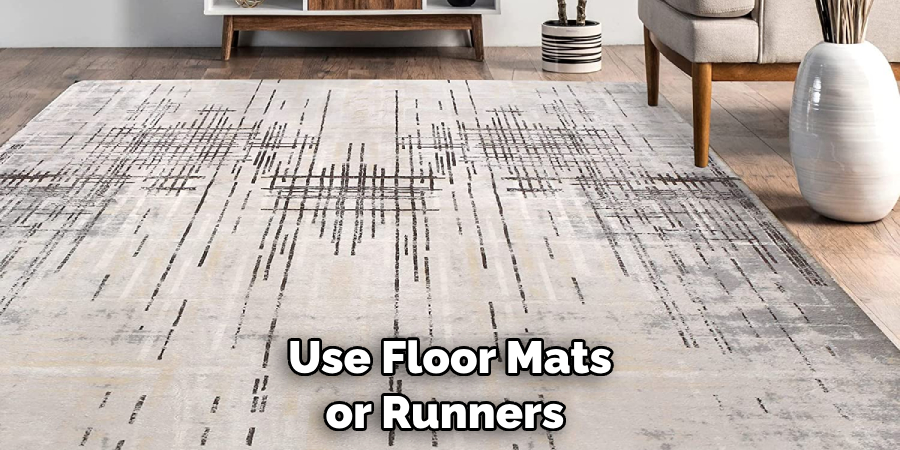
Finally, make sure to use only floor wax specifically designed for epoxy floors so that you can ensure the best possible protection of your floors. An epoxy floor can last many years without needing repairs or replacements with proper maintenance and care.
Conclusion
In conclusion, regular washing and cleaning of epoxy floors can help to keep them looking nice and prolong their life. When washing, it is important to use the right cleaner for your particular floor type. Use a non-abrasive formula that won’t damage the surface for soap-based cleaners.
For chemical cleaners, make sure to check the instructions on the label before using, and always be sure to protect yourself with gloves and safety goggles. If you spill any corrosive or hazardous materials, such as solvents, on your epoxy floor, clean them up immediately.
With proper cleaning and maintenance, your epoxy floors can last for many years. I hope reading this post has helped you learn how to wash epoxy floors. Make sure the safety precautions are carried out in the order listed.
